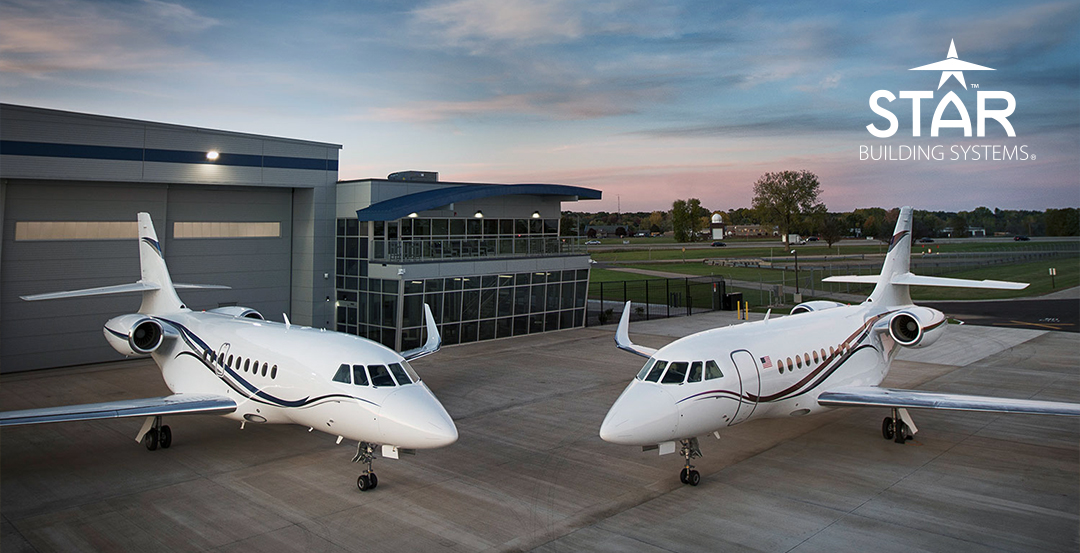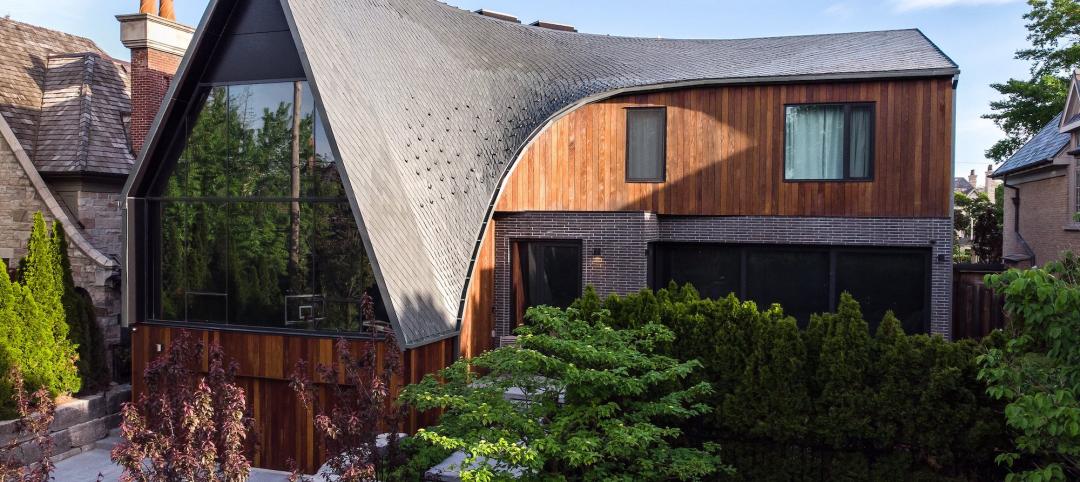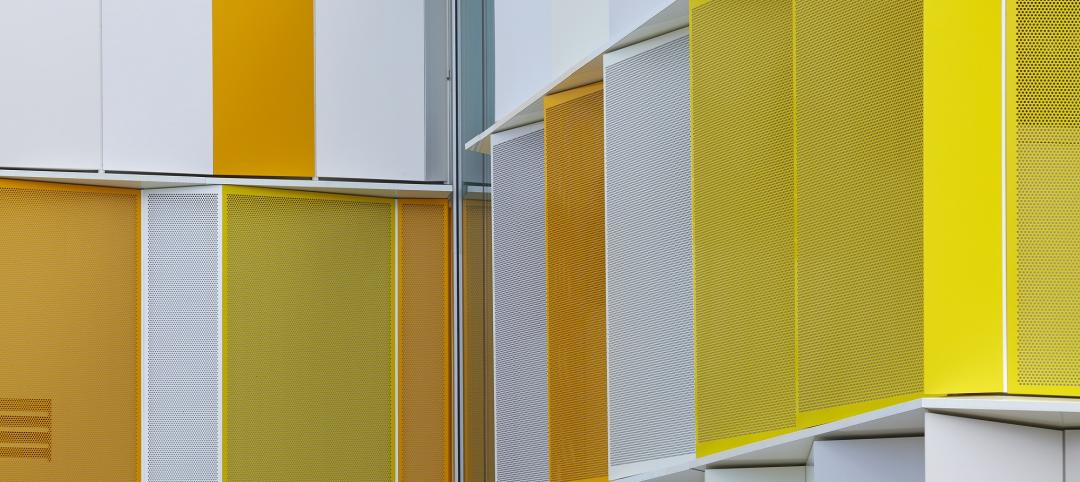Metal building systems first gained popularity because of their reputation for being affordable and fast to build. Long-term benefits include extreme durability and longevity, energy efficiency, low maintenance and sustainability. The combination of design flexibility and high value-to-cost enable design professionals to provide their clients with cost-effective solutions for their practical and aesthetic requirements. And while these advantages are still true today, owners are also realizing that custom-engineered metal buildings meet the highest standards for safety when it comes to providing protection from the elements, natural disasters and pest infestations. And at Star Building Systems, providing a durable, safe and exceptional custom-engineered metal building is our number one priority.
 Terra Verde Discovery School’s design needed to address the school’s functional needs and align with their mission of wellness and ecological goals. See more photos
Terra Verde Discovery School’s design needed to address the school’s functional needs and align with their mission of wellness and ecological goals. See more photos
Building in Safety
Metal building systems are safe buildings, among other things, because of the inherent strong and resilient properties of steel. Star builders have the ability to work with our engineers and designers to create buildings that meet their client’s individual safety needs. They know our buildings are constructed and erected by certified professionals who follow the OSHA Safety Standards for Metal Buildings. The two essential missions of any building are to remain standing, and to protect the interior. Metal building systems, like all well-built structures, are engineered to be safe in natural conditions that may be reasonably predicted for the building’s location, including rain, snow, hail and earthquakes. They are also designed to withstand fire.
It is important to understand that modern safety design focuses, first and foremost, on preserving the lives of the building’s occupants. Codes define buildings that can withstand loads of theoretical worst-case events, far greater than the everyday average loads. In an extreme event, the design goal is that the occupants should survive, even if the building itself is a complete sacrifice. In the case of a strong earthquake, for example, the building may be severely deformed and no longer serviceable, but it is designed to remain standing and not collapse, allowing occupants to be safely evacuated.
 A tight design-build schedule required Halo Branded Solutions headquarters to combine two building locations onto a new site within twelve months. See more photos
A tight design-build schedule required Halo Branded Solutions headquarters to combine two building locations onto a new site within twelve months. See more photos
Advantages of Steel
As the leading framing material in North America, steel makes a more resilient structure because it is a more ductile material. It can bend considerably before it finally breaks. It will respond better in an earthquake than a completely rigid structure. In smaller seismic events, the building is more likely to snap back than it is to crack. In the maximum seismic event that the building is designed for, it may be severely deformed, but it won’t undergo progressive collapse.
Steel is also lighter than concrete, allowing the building to undergo less force from the mass of the building itself. This requires less earthquake resistance to be built into the superstructure and into the foundation, potentially lowering construction costs too.
Wind and Snow Loads
Wind and snow loads are defined by building codes and local weather records. Any properly engineered building must comply with them and metal buildings are able to meet these requirements easily.
Star’s steel wall panels are designed to handle wind loads of up to 145 MPH. The steel of these panels is kept thin in order to keep the panels light in weight; however, they are engineered for much greater strength than a simple piece of flat steel. The various patterns of bends in the steel surface not only offer a choice of appearance options, but they also make the panel more rigid. Even though the bends are very small, each crease makes the panel much more resistant to bending or denting.
Steel wall and roof panels, with their series of bend-details, are strong enough to meet the wind and snow codes in all 50 states. Their resilience and durability have been proven by the thousands of metal buildings, many over a half-century-old, that continue to give good service.
 City National Arena, the practice facility for the Las Vegas Golden Knights, brought ice hockey to the desert and the surrounding community. See more photos
City National Arena, the practice facility for the Las Vegas Golden Knights, brought ice hockey to the desert and the surrounding community. See more photos
Fire Safety
Steel is good for fire safety because steel is non-combustible. The building structure cannot catch fire. This makes fire safety design of the overall building much easier. Other elements of the building, such as cladding or interior finishes, must also meet fire codes. If combustible materials will be used or stored in the building, appropriate fire-protection systems must be installed.
Steel is also resistant to natural forces that can compromise the safety of other building materials. It cannot rot. It does not support the growth of mold or mildew. It is impervious to termites. Steel can also absorb more energy than less sturdy building materials. Steel does not attract lightning; however, if lightning strikes a steel building or roof, the damage is typically minimized, due to the lower electrical resistance as steel spreads the heat of the strike along the grounded roof and walls.
Sustainability
Star metal buildings are produced with materials that are 99% recyclable. Steel is the world’s most recycled material, as more than 80 million tons are recycled annually. Steel can be recycled for a number of purposes, without ever compromising the integrity of the material, contributing to the long lifespan of a steel building.
A Star custom-engineered metal building system, properly constructed and maintained, can perform excellently and give service for generations. The inherent robustness of the materials, the knowledge of the Star builders and engineers along with the building system make these structures safe, long-lived and suitable for a broad variety of climates, conditions and applications. To learn more about the safety and longevity of a metal building system from Star Building Systems, visit www.starbuildings.com.
Related Stories
75 Top Building Products | Apr 22, 2024
Enter today! BD+C's 75 Top Building Products for 2024
BD+C editors are now accepting submissions for the annual 75 Top Building Products awards. The winners will be featured in the November/December 2024 issue of Building Design+Construction.
Products and Materials | Mar 31, 2024
Top building products for March 2024
BD+C Editors break down March's top 15 building products, from multifamily-focused electronic locks to recyclable plastic panels.
75 Top Building Products | Dec 13, 2023
75 top building products for 2023
From a bladeless rooftop wind energy system, to a troffer light fixture with built-in continuous visible light disinfection, innovation is plentiful in Building Design+Construction's annual 75 Top Products report.
Products and Materials | Oct 31, 2023
Top building products for October 2023
BD+C Editors break down 15 of the top building products this month, from structural round timber to air handling units.
Metals | Oct 11, 2023
Tremco CPG Inc. Announces Acquisition of First US Fabricator of Tested, Certified IBC Compliant MCM Panels
Tremco CPG Inc. (“Tremco”) today announced the acquisition of the wall system fabrication segment of NOW Specialties, LLC (“NOW”). Located in Carrollton, Texas, NOW is a leading panel wall system fabricator specializing in Metal Composite Material (MCM) and Aluminum Composite Material (ACM) panels. The installation side of the business was not acquired and continues to operate as NOW Specialties.
Metals | Sep 11, 2023
Best practices guide for air leakage testing for metal building systems released
The Metal Building Manufacturers Association (MBMA) released a new guidebook, Metal Building Systems - Best Practices to Comply with Whole-Building Air Leakage Testing Requirements.
Metals | Aug 24, 2023
METALCON Announces The Architect’s Experience
The Architect’s Experience at METALCON ― the only global event dedicated exclusively to the application of metal in design and construction ― announces special programming for design professionals at this year’s show beginning on Wednesday, Oct. 18 at the Las Vegas Convention Center.
Building Materials | Jun 14, 2023
Construction input prices fall 0.6% in May 2023
Construction input prices fell 0.6% in May compared to the previous month, according to an Associated Builders and Contractors analysis of the U.S. Bureau of Labor Statistics’ Producer Price Index data released today. Nonresidential construction input prices declined 0.5% for the month.
Metals | Apr 19, 2023
Sherwin-Williams Coil Coatings releases new color forecast for architectural metal coatings
The Coil Coatings division of Sherwin-Williams has released its latest color forecast, FUSE, for architectural metal coatings. The report aims to inspire architects, product manufacturers and original equipment manufacturers (OEMs) in the coil and extrusion market over the next 3-5 years and beyond.
Sponsored | Metals | Apr 10, 2023
Transformative Sustainable Redesign for the Bright Minds of the Future
Without interrupting the academics of students at Fleming College, the team at Gow Hastings Architects modernized this decades-old campus building. The new energy-efficient A-Wing is a revelation in sustainability with a gorgeous design centered on natural light and openness made possible with ALPOLIC metal composite materials.
















